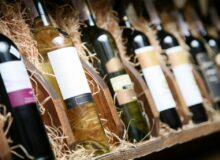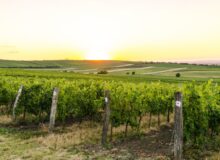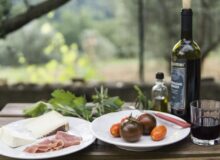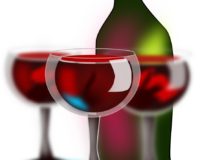It’s April and that usually means its time to taste the Bordeaux in Barrels. These “En Primeur” tastings is Bordeaux bring on a who’s who in the wine tasting world to rate the future of the vintage and what the effects on the market might be; Granted there is an idea based on previous vintage information, but nevertheless there is always excitement.
The wines focused on and tasted during “En Primeur’ are usually the classics, the older wineries, the 1855 Classification Growths, the heavy hitters from the left and right banks.
So in honor of Bordeaux I am going to write about and list some thoughts on California and their older wineries…How’s that!?!
As Karen MacNeil’s nicely researched ‘The Wine Bible’ (I totally recommend) puts it…
By the turn of the 20th century nearly 300 grape varieties were being grown in California, providing for its nearly 800 wineries. Worldwide recognition looked pending, especially after helping solve the Pheloxera disease crisis in France by using American rootstock saving the Bordeaux vineyards.
Yes! That actually happened.
But then suddenly on January 16, 1919… the 18th Amendment ushered in the beginning of Prohibition.
The rest is history until California came roaring back in the late sixties and seventies.
Let’s review some of the classic California Wineries, wines and oldest vines.
In the late 1800’a and early 1900’s…During this period some of California’s oldest wineries were founded including :
Buena Vista Winery, Gundlach Bundschu, Inglenook Winery, Markham Vineyards and Schramsberg Vineyards. – Great pedigree with abundant value…and then some
In a way, these wineries should be looked upon, here are some tid-bits.
So here’s a nice list of 100 year old wineries….
• Beaulieu Vineyards –Founded in 1900, a great place to visit too
• Beringer – Famous Rhine House completed in 1884; I’d like to add, as part of their line the Knights Valley Cabernet provides such a great consistent value
• Charles Krug – Founded in 1861 by Charles Krug, owned by Peter Mondavi
• Chateau Montelena – Established in 1882 by Alfred Tubbs.
• Inglenook – This Chateau dates back to 1879
• Nichelini – Founded in 1890 and the same family owns it today
• Schramsberg – Founded in 1862, the present owners purchased the winery in 1968
• Trefethen Family Vineyards – Winery built in 1886, Trefethen begins in 1968
• Buena Vista Winery – Pioneer Haraszthy founded Buena Vista Winery in 1857 on a site in Sonoma
Check them out, keep them handy…Good wine, good conversation.
Here are also some California vineyards that have some of America’s Oldest Vines along with a blurb or two….
Michael David Winery Ancient Vine Cinsault
Back then these 128-year-old vines were planted, Grover Cleveland was the USA president, and when you needed to get to get around in a hurry you rode a horse and buggy.
Scherrer Old & Matua Vines Zinfandel
A wine that is multi-generational; Fred Scherrer makes it with fruit from vines his father and grandfather planted in the 1970s and 1912, respectively.
Turley Duarte Zinfandel
Using ancient vines of Contra Costa County, this red zin pulls from the Salvador, Evangelho and Mori vineyards (the Mori vineyard spooky story is that it was planted by a pair of gravedigger brothers in the 1940s).
Bedrock Wine Co. Bedrock Heritage Red
The Bedrock Vineyard purportedly has 33 acres of ancient vines date from 1888; as landowner Morgan Twain-Peterson has said, “This vineyard has a long history, and I’m just passing through.”
Ravenswood Old Hill Zinfandel
It has been reported since 1871, that journalists were praising this vineyard; the Pacific Rural Press wrote that its wine was “superior…to any in the state.”
Also, for good measure I thought I’d mention the famous 1976 Reds
from the Paris tasting because they competed against many “En Premeur” wines…These wines have gone on to good fortune and status
The Paris Wine Tasting of 1976 or the Judgment of Paris was a wine competition –Reds:
Stag’s Leap Wine Cellars 1973
Ridge Vineyards Monte Bello 1971
Heitz Wine Cellars Martha’s Vineyard 1970
Clos Du Val Winery 1972
Mayacamas Vineyards 1971
Freemark Abbey Winery 1969
As you can see California has some very cool historical vineyards and wines to keep you busy on this kind of subject.







